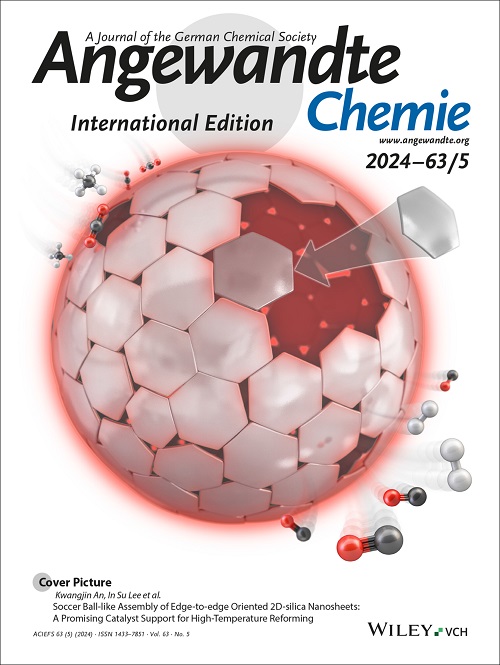Achieving Charge‐Transfer‐Featured Organic Room‐Temperature Phosphorescence with Combined High Efficiency and Long Lifetime via V‐Shaped D–A Dyads
IF 16.9
1区 化学
Q1 CHEMISTRY, MULTIDISCIPLINARY
引用次数: 0
Abstract
The realization of long‐lived charge‐transfer‐based organic room‐temperature phosphorescence (通过V形D-A二极体实现具有电荷转移特征的有机室温磷光,并结合了高效率和长寿命
通过构建U形供体-受体(D-A)二体来实现基于电荷转移的长寿命有机室温磷光(3CT - RTP, τPh = 210 ms),由于磷光效率不理想(= 6%)而受到阻碍。在此,我们发现将D-A二元体的骨架从U形修饰为V形构型,可以产生长τPh (150-220 ms)和高τPh(13%-25%)的3CT - RTP。这种改进源于在化合物的辐射跃迁过程中保留了相当程度的禁性,同时增加了其D-A二面角,这可以促进更有效的自旋轨道耦合,从而更快地在系统间交叉。此外,增加V型D-A二元体的框架刚度可以潜在地降低三重态激子的非辐射跃迁速率常数(knr,T),从而有助于实现长τPh和高τPh。
本文章由计算机程序翻译,如有差异,请以英文原文为准。
求助全文
约1分钟内获得全文
求助全文
来源期刊
CiteScore
26.60
自引率
6.60%
发文量
3549
审稿时长
1.5 months
期刊介绍:
Angewandte Chemie, a journal of the German Chemical Society (GDCh), maintains a leading position among scholarly journals in general chemistry with an impressive Impact Factor of 16.6 (2022 Journal Citation Reports, Clarivate, 2023). Published weekly in a reader-friendly format, it features new articles almost every day. Established in 1887, Angewandte Chemie is a prominent chemistry journal, offering a dynamic blend of Review-type articles, Highlights, Communications, and Research Articles on a weekly basis, making it unique in the field.

 求助内容:
求助内容: 应助结果提醒方式:
应助结果提醒方式:


